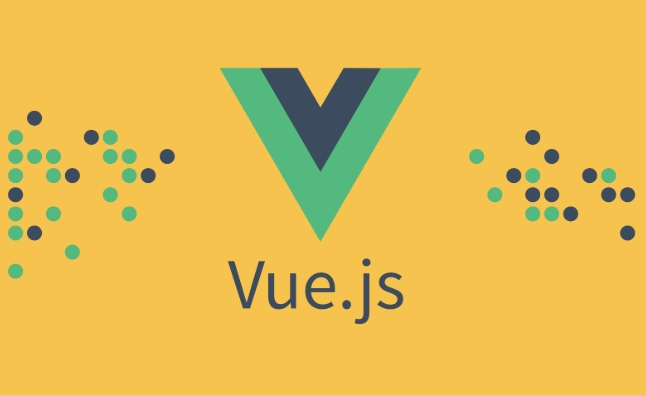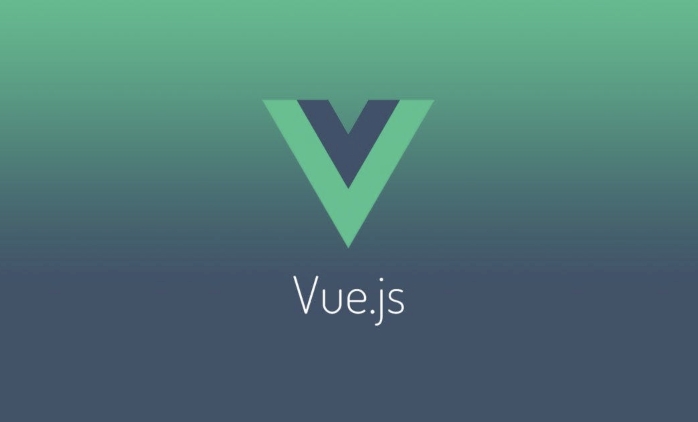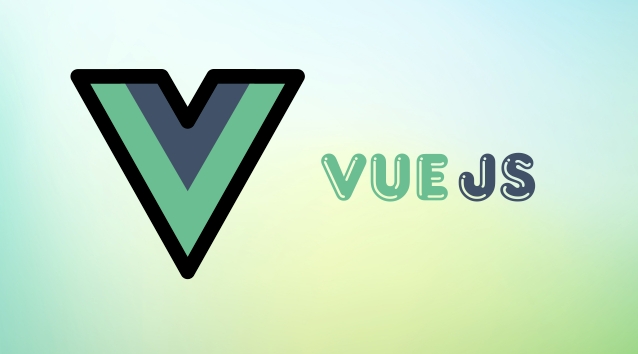The process of creating a library based on Vue CLI includes the following steps: 1. Use the --target lib parameter to package the library, with the command vue-cli-service build --target lib --name your-library-name [entry]; 2. Configure vue.config.js to optimize output directory, style processing, and module export; 3. Select to package the entire project or individual components according to requirements; 4. Pay attention to dependency management, style introduction, TypeScript support and module format selection. Through reasonable configuration and command use, the Vue library can be built and published smoothly.

Creating a library based on Vue CLI is not complicated, but it requires understanding some key steps and configuration methods. Vue CLI provides build commands to package components or libraries, which are ideal for developing reusable UI component libraries or toolkits.

Basic commands for building libraries using Vue CLI
Vue CLI 3 and above supports packaging the project into a library through --target lib parameter. The basic commands are as follows:
vue-cli-service build --target lib --name your-library-name [entry]
in:

-
--target libmeans packaged in library mode; -
--nameis the output library name; -
[entry]is an entry file, which issrc/main.jsby default. If a component is packaged separately, you can specify a specific path, such assrc/components/MyComponent.vue.
After execution, multiple packaged files will be generated, including .umd.js , .umd.min.js , .js (ES Module) and .css files.
Configure vue.config.js to optimize output
Although the default configuration can already work, in order to better control the output directory and format, it is recommended to create or modify the vue.config.js file in the project root directory, for example:

module.exports = {
outputDir: 'dist', // output directory assetsDir: 'static', // static resource directory css: {
extract: false, // Not extracting CSS alone, suitable for library projects},
configureWebpack: {
output: {
libraryExport: 'default' // Make sure ES6 exports the default module}
}
}The advantage of this is that it can unify naming rules, avoid style issues, and also enable users to import your library more conveniently.
Packaging a single component or an entire project?
It depends on your usage scenario:
Package the entire project : It works for you to have a complete library structure and want to export multiple components at once.
vue-cli-service build --target lib --name mylib src/main.js
Packaging a single component : If you want to publish a standalone component as an NPM package, you can directly specify that component as an entry:
vue-cli-service build --target lib --name mycomponent src/components/MyComponent.vue
After packaging, you can publish the generated
distdirectory contents to NPM or provide them to others to introduce as modules.Notes and FAQs
- Dependency problem : Packaged libraries will not include third-party dependencies (such as
lodashoraxios) by default. If you want to automatically introduce these dependencies when using externally, you do not need to deal with them specifically; if you want to build-in dependencies, you need to manually configure webpack. - Style handling : If your component depends on global styles, it is recommended to provide a
.cssfile and explain how to introduce it. - TypeScript support : If you are using TypeScript, make sure that relevant plugins (such as
ts-loaderandfork-ts-checker-webpack-plugin) are installed, otherwise an error may be reported. - ES Module vs UMD : UMD has better format compatibility and is suitable for various environments; ES Module is more suitable for modern build tools and is recommended for development libraries.
Basically that's it. The whole process is not complicated, but there are several details that are easy to ignore, especially the selection of entry files and the configuration of webpack. Just pay attention to these points, it should be smooth to build libraries with Vue CLI.
The above is the detailed content of How to create a library build with Vue CLI?. For more information, please follow other related articles on the PHP Chinese website!
- Dependency problem : Packaged libraries will not include third-party dependencies (such as

Hot AI Tools

Undress AI Tool
Undress images for free

Undresser.AI Undress
AI-powered app for creating realistic nude photos

AI Clothes Remover
Online AI tool for removing clothes from photos.

Clothoff.io
AI clothes remover

Video Face Swap
Swap faces in any video effortlessly with our completely free AI face swap tool!

Hot Article

Hot Tools

Notepad++7.3.1
Easy-to-use and free code editor

SublimeText3 Chinese version
Chinese version, very easy to use

Zend Studio 13.0.1
Powerful PHP integrated development environment

Dreamweaver CS6
Visual web development tools

SublimeText3 Mac version
God-level code editing software (SublimeText3)

Hot Topics
 What is headless UI in Vue?
Jul 08, 2025 am 01:38 AM
What is headless UI in Vue?
Jul 08, 2025 am 01:38 AM
HeadlessUIinVue refers to a library of UI components that provide no preset styles and only contains core logic and behavior. Its features include: 1. No style restrictions, developers can customize the design; 2. Focus on barrier-free and interactive logic, such as keyboard navigation, state management, etc.; 3. Support Vue framework integration, exposing the control interface through combinable functions or components. Reasons for use include: maintaining design consistency, built-in accessibility, strong component reusability, and lightweight library size. In practical applications, developers need to write HTML and CSS themselves. For example, when building a drop-down menu, the library handles state and interaction, while developers decide on visual presentation. Mainstream libraries include HeadlessUI and RadixVue for TailwindLabs, suitable for
 How to watch nested properties in Vue 3?
Jul 07, 2025 am 12:51 AM
How to watch nested properties in Vue 3?
Jul 07, 2025 am 12:51 AM
In Vue3, there are three ways to monitor nested properties using the watch function: 1. Use the getter function to accurately monitor specific nested paths, such as watch(()=>someObject.nested.property,callback); 2. Add the {deep:true} option to deeply monitor changes within the entire object, which is suitable for situations where the structure is complex and does not care about which property changes; 3. Return an array in the getter to listen to multiple nested values ??at the same time, which can be used in combination with deep:true; in addition, if ref is used, the nested properties in its .value need to be tracked through getter.
 Key differences between Vue 2 and Vue 3?
Jul 09, 2025 am 01:29 AM
Key differences between Vue 2 and Vue 3?
Jul 09, 2025 am 01:29 AM
Vue3 has improved in many key aspects compared to Vue2. 1.Composition API provides a more flexible logical organization method, allowing centralized management of related logic, while still supporting Vue2's Options API; 2. Better performance and smaller package size, the core library is reduced by about 30%, the rendering speed is faster and supports better tree shake optimization; 3. The responsive system uses ES6Proxy to solve the problem of unable to automatically track attribute addition and deletion in Vue2, making the responsive mechanism more natural and consistent; 4. Built-in better support for TypeScript, support multiple node fragments and custom renderer API, improving flexibility and future adaptability. Overall, Vue3 is a smooth upgrade to Vue2,
 How to build a component library with Vue?
Jul 10, 2025 pm 12:14 PM
How to build a component library with Vue?
Jul 10, 2025 pm 12:14 PM
Building a Vue component library requires designing the structure around the business scenario and following the complete process of development, testing and release. 1. The structural design should be classified according to functional modules, including basic components, layout components and business components; 2. Use SCSS or CSS variables to unify the theme and style; 3. Unify the naming specifications and introduce ESLint and Prettier to ensure the consistent code style; 4. Display the usage of components on the supporting document site; 5. Use Vite and other tools to package as NPM packages and configure rollupOptions; 6. Follow the semver specification to manage versions and changelogs when publishing.
 How to create a Vue 3 project with Vite?
Jul 05, 2025 am 01:39 AM
How to create a Vue 3 project with Vite?
Jul 05, 2025 am 01:39 AM
It is recommended to use Vite to create Vue3 projects because it uses the browser's native ES module support and has a fast startup speed in development mode. 1. Make sure to install Node.js (16.x or higher) and npm/yarn/pnpm; 2. Run npmcreatevite@latestmy-vue-app--templatevue initialization project; 3. Follow the prompts to select TypeScript, VueRouter and other configurations; 4. Execute cdmy-vue-app and npminstall installation dependencies; 5. Use npmrundev to start the development server. Optional configurations include automatic browser opening, proxy settings, alias paths, and packaging optimizations. Recommended insurance
 How to define routes in vue router?
Jul 05, 2025 am 12:58 AM
How to define routes in vue router?
Jul 05, 2025 am 12:58 AM
Defining routes in Vue projects requires understanding the structure and configuration. The steps are as follows: 1. Install and introduce vue-router, create a routing instance, and pass in a routes array containing path and component; 2. Use dynamic routing matching such as /user/:id to obtain parameters; 3. Use children attribute to implement nested routes; 4. Name the routes with the name attribute for jumping; 5. Use redirect for path redirect. After mastering these core points, you can configure routing efficiently.
 Benefits of using ?
Jul 08, 2025 am 12:20 AM
Benefits of using ?
Jul 08, 2025 am 12:20 AM
? in regular expressions are used to convert greedy matches to non-greedy, achieving more accurate matches. 1. It makes the content as little as possible to match as little as possible to avoid mismatch across tags or fields; 2. It is often used in scenarios such as HTML parsing, log analysis, URL extraction, etc. that require precise control of the scope; 3. When using it, it is necessary to note that not all quantifiers are applicable. Some tools need to manually enable non-greedy mode, and complex structures need to be combined with grouping and assertions to ensure accuracy. Mastering this technique can significantly improve text processing efficiency.
 What is CORS and how does it affect Vue development?
Jul 07, 2025 am 12:11 AM
What is CORS and how does it affect Vue development?
Jul 07, 2025 am 12:11 AM
CORSissuesinVueoccurduetothebrowser'ssame-originpolicywhenthefrontendandbackenddomainsdiffer.Duringdevelopment,configureaproxyinvue.config.jstoredirectAPIrequeststhroughthedevserver.Inproduction,ensurethebackendsetsproperCORSheaders,allowingspecifico






